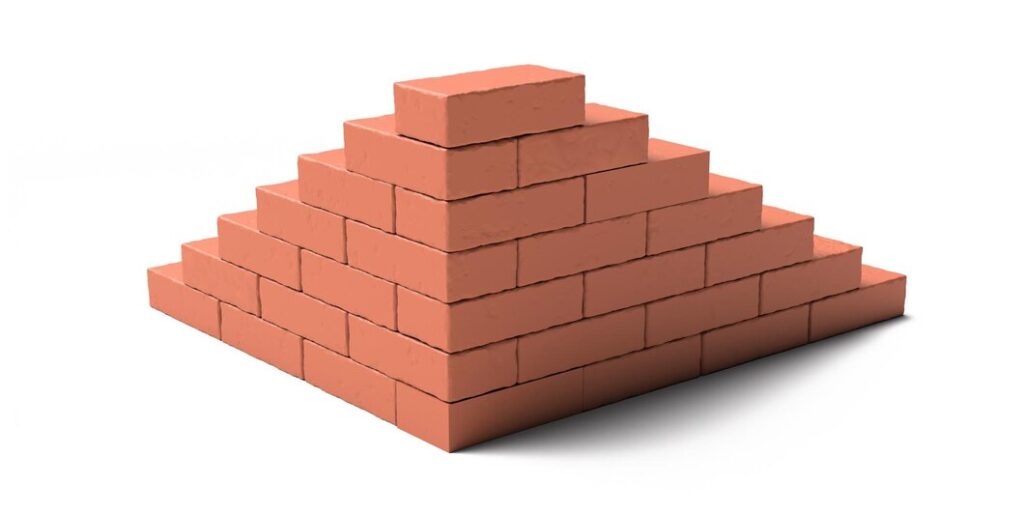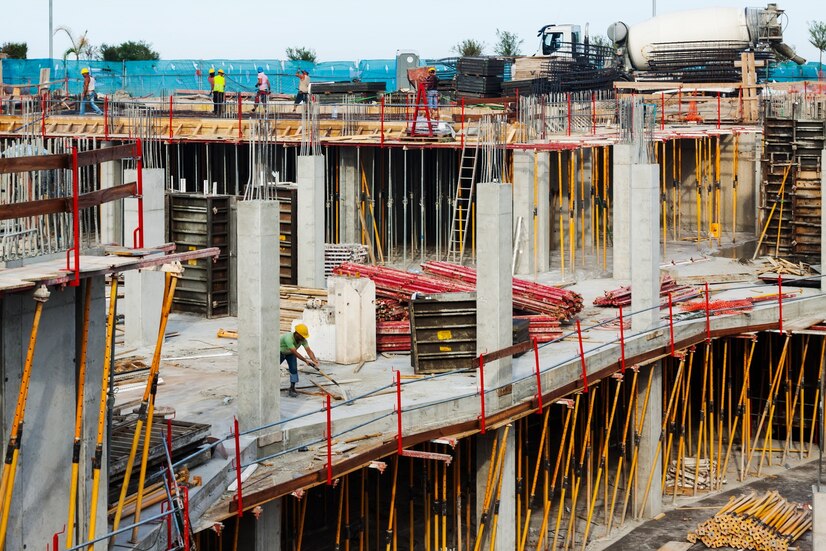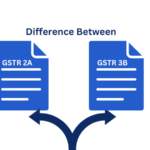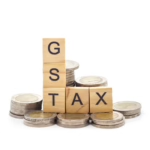Key Takeaway
- The GST has standardized the tax rate for bricks and other construction materials at 18%, simplifying tax compliance across states.
- Eco-friendly materials like fly ash bricks benefit from a reduced GST rate of 12% to encourage sustainable building practices.
- The implementation of GST has eliminated the cascading tax effect, allowing businesses to claim input tax credits and reduce overall costs.
- Higher GST rates on luxury construction materials like marble and granite reflect the government’s approach towards taxing non-essential goods.
- Despite initial challenges, the uniform GST structure has ultimately helped streamline operations and pricing strategies in the construction industry.
Pre-GST Taxation
Before the implementation of the Goods and Services Tax (GST) in July 2017, the taxation environment for building bricks and other construction materials in India was complex and fragmented. Different types of taxes were levied on these materials, including Value Added Tax (VAT), excise duty, sales tax, and sometimes even additional local taxes such as entry taxes or octroi. These taxes varied widely between states, creating a non-uniform tax structure across the country.
- VAT Variability: VAT rates differed from state to state, typically ranging from 5% to over 12%. This meant that the cost of construction materials could vary significantly depending on the location, leading to inefficiencies and increased costs in logistics and supply chain management.
- Excise Duty: Certain construction materials were also subject to central excise duty, which was a tax levied by the Central Government on the manufacture of goods. The rate of excise duty depended on the classification of the goods under various schedules.
- Cascading Tax Effect: The pre-GST tax regime did not allow for the seamless transfer of input tax credit. This led to a cascading effect where taxes were paid on already taxed amounts, thereby inflating the cost of construction materials further. This effect was particularly pronounced in the construction sector, where multiple layers of products and services are taxed before the final product is realized.
- Compliance and Administration: Compliance with the diverse tax laws and administrative burden was also a significant challenge for businesses. Each state had its own rules and regulations regarding VAT, along with different rates and methods for filing returns. This scenario demanded substantial time and resources, especially for businesses operating across multiple states.
Bricks GST Rate

The implementation of the Goods and Services Tax (GST) in India has standardized the taxation across various sectors, including construction materials like bricks. Here’s a detailed look at how GST is applied to bricks and related construction materials:
GST on Fly Ash Bricks
Fly ash bricks are taxed at a reduced GST rate of 12%. This lower rate is part of the government’s initiative to promote eco-friendly construction practices. Fly ash bricks are made from the ash produced by burning pulverized coal in electric power generating plants, and their use helps in recycling waste material, reducing the environmental impact associated with traditional brick manufacturing.
GST on Prefabricated Components
Prefabricated construction components, including modular panels and pre-assembled structures like bathroom pods, are taxed under GST at a rate of 18%. This rate aligns with the standard GST rate for most manufactured goods that are not considered essential.
GST on Paver Blocks
Paver blocks, commonly used in landscaping, driveways, and pedestrian walkways, are an essential component in urban infrastructure and private construction. Paver blocks are subject to a GST rate of 18%. This aligns them with other non-essential construction materials that are typically used for aesthetic or functional enhancements rather than structural necessities.
GST on Building Stones
Building stones are essential components in construction, used for a variety of structural and decorative purposes. Under the Goods and Services Tax (GST) regime, building stones such as limestone, granite, and other similar materials are typically taxed at a rate conducive to promoting construction activities while aligning with environmental and economic policies. Here’s a detailed look at the GST treatment for building stones:
- General Building Stones: For general construction stones like limestone and sandstone, the GST is levied at a lower rate of 5%. This rate is chosen to support the construction industry by making these essential materials more affordable, thereby facilitating infrastructure development across the country.
- Granite and Marble: While basic building stones attract a lower rate, more luxurious stones like granite and marble are subjected to different GST rates depending on their processing and finish. Raw, unpolished granite and marble slabs are taxed at 12%, reflecting their value addition compared to more refined products.
- Processed Stones: Polished and processed stones, which are ready for use in high-end finishing and decoration, are taxed at a higher rate, typically 18% or 28%. This categorization underlines the luxury status of finished and polished stone products used in decorative applications.
GST Rates on Construction Materials
The Goods and Services Tax (GST) has streamlined the tax structure for construction materials in India, providing a more uniform approach compared to the pre-GST era. Here’s an overview of the GST rates applicable to various construction materials:

- Cement: One of the essential materials in construction, cement is taxed at the highest slab of 28% under GST. This high rate reflects the government’s approach towards taxing luxury and non-essential goods.
- Iron and Steel: Used extensively in building frameworks and infrastructure, iron and steel products are subject to an 18% GST rate. This rate helps in maintaining a balance between revenue generation for the government and cost efficiency for the construction industry.
- Sand: Sand, crucial for making concrete and mortar, is generally exempt from GST, promoting affordability in housing and infrastructure projects.
- Electrical Fittings: Electrical fixtures and fittings, essential for the completion of any construction project, are taxed at 18%. This rate applies to products like wires, switches, and sockets.
- Paints and Wall Finishes: Paints, varnishes, and similar wall finishes are taxed at 28%, categorized under the luxury items slab.
- Glass: Glass, which includes various types used in buildings for windows and facades, is taxed at 28% under GST. Special types of glass used in energy-saving applications may be categorized differently.
- Wood and Plywood: Wood and plywood, foundational for furniture and structural applications, are taxed at 18%, which helps in supporting the wood industry while ensuring government revenue from more finished wood products.
GST on Crushed Stones, Gravels, and Marbles
Crushed stones, gravels, and marbles play crucial roles in construction and landscaping. Under the GST regime, these materials are taxed at a favorable rate to facilitate affordable construction and infrastructure development. Here is a breakdown of the GST rates for these materials:
- Crushed Stones and Gravels: These materials are commonly used as base substances in the construction of roads, buildings, and other infrastructure. They attract a GST rate of 5%. This lower rate is intended to support construction activities across the country by making these essential materials more economically accessible.
- Marbles: Marbles, used for their aesthetic value in flooring, countertops, and other decorative purposes, are also taxed at 5% under GST when crushed or in raw form. This rate aligns with other building stones, promoting their use in both residential and commercial construction without imposing a heavy tax burden.
💡If you want to pay your GST with Credit Card, then download Pice Business Payment App. Pice is the one stop app for all paying all your business expenses.
GST on Roofing Tiles

Roofing tiles, commonly used in residential and commercial construction for their durability and aesthetic appeal, are subject to GST. Under the GST regime, roofing tiles generally attract a tax rate of 18%. This rate includes both ceramic and concrete roofing tiles, which are the most commonly used types.
The 18% GST rate for roofing tiles is part of an effort to standardize the taxation of construction materials, aligning them with similar products in the building sector. This rate is intended to simplify the tax structure for builders and homeowners alike, ensuring that there is a uniform tax application across various types of construction materials.
Impact of GST on the Brick Industry
The implementation of the Goods and Services Tax (GST) has had a profound impact on various sectors, including the brick industry, which is crucial for the construction sector. Here’s an analysis of how GST has affected the brick industry:
- Standardization of Tax Rates: Prior to GST, the brick industry faced a complex tax regime that varied significantly from state to state, including VAT, excise duties, and other local levies. GST has standardized the tax rate across the country at 18% for most types of bricks, simplifying the tax framework and ensuring uniformity in pricing across states.
- Reduction in Cascading Taxes: GST has eliminated the cascading effect of taxes that was prevalent under the old tax regime. Under GST, the entire supply chain of the brick industry benefits from the input tax credit (ITC), which allows businesses to deduct the tax paid on inputs from the tax due on output. This mechanism has significantly reduced the tax burden on brick manufacturers, contributing to lower production costs.
- Improved Compliance and Transparency: The GST system has brought about better compliance and transparency in the brick industry. The digitization of tax processes and mandatory GST registration ensures that most transactions within the industry are recorded, reducing the possibility of tax evasion and increasing government revenues.
- Impact on Pricing and Competitiveness: While the implementation of GST has streamlined tax rates, the 18% tax rate is higher compared to some of the earlier lower state-specific rates. This has led to an increase in the cost of bricks in regions where the previous tax rates were lower. However, the ability to claim ITC can offset some of these increased costs, keeping the final prices competitive.
- Challenges in Transition: The transition to the GST regime has not been without challenges, especially for smaller brick manufacturers who struggle with the complexities of GST filing and the upfront costs associated with higher tax rates. However, the overall benefits of GST, such as reduced logistical and compliance costs, tend to outweigh these initial hurdles over time.
- Encouragement of Eco-Friendly Bricks: GST has also incentivized the production and use of eco-friendly alternatives like fly ash bricks, which are taxed at a lower rate of 12%. This differential tax strategy promotes sustainable building practices and supports environmental conservation.
Hike in GST Rates for Brick Industry
The brick industry has seen a shift in GST rates, which has sparked various responses from stakeholders within the sector. Here’s an analysis of the impact of this rate increase and its implications:
- Increase from Lower Pre-GST Rates: Prior to the implementation of GST, the tax rates on bricks varied significantly across states due to the application of VAT, which could be as low as 5% in some regions. The consolidation of taxes under GST has resulted in a standardized rate of 18% for most types of bricks. This increase has been felt more acutely in regions where the previous tax rates were lower, impacting the cost structure of the brick manufacturing business.
- Comparison of GST Structures: Under the pre-GST tax regime, the industry benefited from lower effective tax rates but dealt with the complexity of multiple taxes and the burden of cascading taxes. Although GST simplified this by standardizing rates and allowing input tax credits, the hike to an 18% uniform rate increased the base cost for manufacturers and consumers alike.
- Blocked Input Tax Credit (ITC): One significant challenge with the GST on bricks is the issue of blocked Input Tax Credits, especially for those in the real estate sector who cannot claim ITC on bricks. This lack of ITC availability has led to increased costs in the construction industry, making projects more expensive and affecting the overall demand for bricks.
- Unlocking Benefits: Opting for the 6% Tax Scheme: Recognizing the challenges faced by the industry, the government offered a 6% GST rate option for those willing to forego the Input Tax Credit. This scheme was introduced to help reduce the tax burden on end consumers and stimulate demand, although it requires careful financial analysis from businesses to determine if it is beneficial on a case-by-case basis.
- Impact on Smaller Enterprises: Smaller brick manufacturers have been particularly affected by the rate hike due to their typically thinner profit margins and lower capability to absorb additional costs. The higher GST rate has put pressure on these smaller entities, potentially leading to consolidation in the industry with larger players becoming more dominant.
- Market Adjustment: Over time, the market is expected to adjust with the new tax structure as manufacturers streamline their operations to optimize costs and leverage the benefits of input tax credits where possible. Additionally, the shift towards more sustainable and eco-friendly bricks, which attract a lower GST rate, may also reshape the industry’s focus.
The Implications of the New GST Rates: What Do You Need to Know?
The revision of GST rates in the construction sector, particularly for bricks and related materials, has several significant implications for businesses and consumers alike. Understanding these changes is crucial for effective financial planning and compliance. Here’s what you need to know about the new GST rates and their broader impacts:
- Standardization of Rates: The introduction of a uniform GST rate for bricks and similar construction materials simplifies the tax regime across states. This standardization eliminates the previous discrepancies and complexities associated with varying state VAT rates and central excise duties, fostering a more streamlined market environment.
- Increased Cost for Some Materials: While the uniform GST rate aims to simplify tax structures, it has also led to an increase in costs for certain materials. For example, where the previous taxes combined were lower than the current 18% GST rate, there will inevitably be a cost increase. This adjustment can affect overall budgeting and pricing strategies in the construction industry.
- Blocked Input Tax Credit (ITC): The issue of blocked ITC remains a significant concern, particularly in sectors where end products are exempt from GST or where the final construction services are outside the GST purview. This can lead to increased costs as the taxes paid on inputs cannot be recovered as credits.
- Encouragement of Eco-Friendly Materials: The GST council has structured rates to favor eco-friendly construction practices. For instance, fly ash bricks have a lower GST rate compared to traditional clay bricks. This incentivizes the use of sustainable materials, aligning with broader environmental goals.
- Impact on Housing and Real Estate: The real estate sector, a major consumer of bricks and other construction materials, feels the impact of these changes acutely. The new rates can influence the cost of new homes and developments, potentially affecting housing affordability and market dynamics.
- Opportunities for Compliance and Efficiency: The new GST regime offers an opportunity for businesses to overhaul their tax compliance systems, potentially leading to greater efficiency. With the simplification of tax rates, businesses can invest in better accounting software and training, reducing the risk of non-compliance and optimizing operational processes.
- Need for Continuous Education and Adaptation: Businesses must stay informed about ongoing changes and interpretations in the GST law. Continuous education and adaptation are required to navigate the complexities of GST, particularly in how it applies to specific materials and projects within the construction sector.
FAQs
What is the GST rate for brick kilns?
Brick kilns producing traditional clay bricks are subject to an 18% GST rate. This uniform rate aims to simplify the tax structure across the industry, despite potentially higher costs compared to pre-GST rates in some regions. The rate helps streamline operations and pricing, making it easier for brick kiln operators to manage their accounting and tax compliance.
How does GST impact the cost of ceramic flooring blocks?
Ceramic flooring blocks are taxed at 18% under GST. This rate is consistent with other non-essential building materials, which includes most types of ceramic and flooring solutions. The uniformity in GST rates facilitates clearer budgeting and pricing strategies for businesses involved in manufacturing and selling these products.
Are refractory bricks subject to a different GST rate compared to standard bricks?
Refractory bricks, used for high-temperature work in kilns and furnaces, are subject to the standard GST rate of 18%. This aligns with the general taxation policy for construction materials, ensuring that all types of bricks, whether standard or specialized, are treated uniformly under the GST system.
What is the GST rate for wall tiles and filler tiles?
Wall tiles and filler tiles, commonly used in building finishes, are taxed at 18% under GST. This rate is set to standardize taxation across various types of tiling products, simplifying compliance while supporting the broader tile industry with a consistent tax policy.
How does GST affect the pricing of ash blocks?
Ash blocks, often made from fly ash, benefit from a reduced GST rate of 12% to encourage the use of environmentally friendly building materials. This lower rate supports sustainable construction practices by making ash blocks more cost-effective compared to other traditional materials.
Are building blocks made from siliceous earth taxed differently?
Building blocks made from siliceous earth are generally taxed at 5% under GST, reflecting their basic necessity in construction. This lower rate is intended to make essential building materials like siliceous earth blocks more affordable, supporting infrastructure development across the country.
What impact does GST have on the use of fossil meals in construction materials?
Fossil meals used in construction materials such as lightweight aggregates are generally subject to a GST of 5%. This rate helps to keep essential construction aggregates more affordable, promoting their use in various building applications and supporting cost-effective construction practices.







